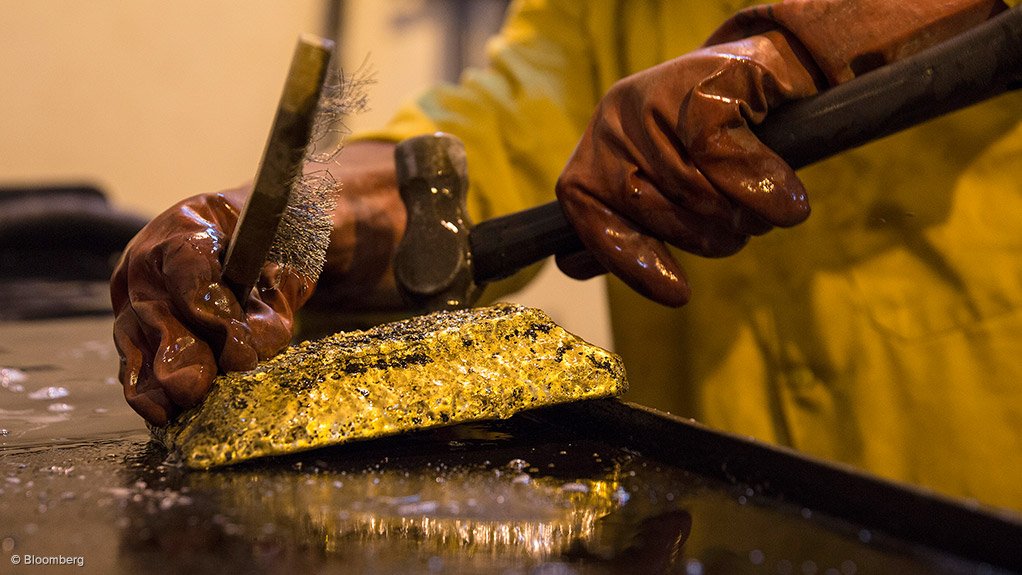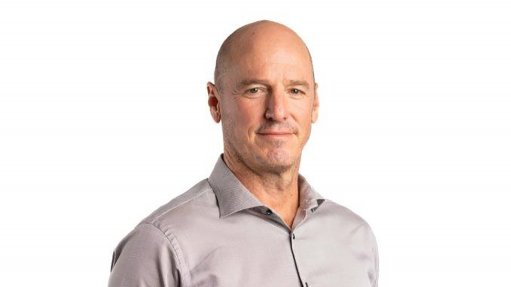Gold industry at a crossroads, return to fundamentals essential for capital
DENVER, Colorado (miningweekly.com) – The gold industry needed to make money once more, and return to fundamentals if it was to succeed in competing with the gold exchange-traded funds (ETFs) for coveted capital, the world’s seventh-largest gold producer by output said on Thursday.
In a keynote address at professional services firm KPMG’s tenth yearly Mining Executive Forum, in Denver, Gold Fields CEO Nick Holland said the gold industry was at a crossroads.
“The focus must return to investor cash returns and not to grow output at all costs. All stakeholders need to grow the pie together in order for mining to create value,” he stated.
To do this, cost control was fundamental. Holland illustrated the point by citing Gold Field’s ongoing transformation, saying that it had, over the past decade, contracted output from about 4.5-million ounces, to about 2.2-million ounces today in favour of generating free cash flow. This was mainly achieved by spinning off the bulk of its South African operations last year into Sibanye Gold.
“We want every asset to return a margin of at least 15% at a $1 300/oz price and, going forward, even at a potentially lower gold price. If you want to compete with the ETFs for capital, give cash back to investors.
“Do not be ‘asset huggers’ and let go of the unprofitable assets. The industry needs a paradigm shift to understand this,” he stressed.
Gold Fields, which operates mines in South Africa, Australia, South America and Ghana, had, in recent months, been focused on lifting cash flows, paying dividends and selling noncore and underperforming assets.
INNOVATE
Holland called on the gold industry for a renewed effort to introduce innovation to the business.
He said there had not been a new technological breakthrough in about 30 years, since heap leaching became commonplace. He did note, however, that within South Africa and Australia, there had been pockets of excellence, such as Gold Fields’ own efforts to pioneer new mining techniques at its flagship South Deep mine, which was the last remaining asset in its South African home base, as it tried to unlock value from the world's second-largest gold reserve.
He also mentioned that AngloGold Ashanti was experimenting with a new horizontal drilling technique, while Australia’s Rio Tinto had demonstrated that full mechanisation, leading on to automation, was achieving great success.
“Mechanisation is the future, but governments do not like it. I believe a real value driver for the gold industry would be to go beyond mechanisation and automate operations wherever possible,” he said.
Holland also stressed that the industry needed to implement and maintain sound local policies. By simply employing local people, an offshore gold company could drive down costs. Through using local supply chains, companies could also slash costs, as Gold Fields had done in Ghana, when it recently ordered new steel balls for a mill locally, instead of paying a premium for imported products from China.
“We need far more of this to make mining really sustainable,” he conceded.
COMMUNICATE IMPACT
Another issue the gold industry had to grapple with and get better at was to successfully communicate the sector’s benefits to all stakeholders, including governments, communities, miners and the private sector.
Holland told delegates that the industry was spending enormous amounts of money, which brought with it significant economic growth and associated multiplier effects.
For example, in a country such as South Africa, the Gini coefficient (which measured the income disparity between the rich and poor) was among the highest in the world, and each job in the mining sector supported, on average, about 27 people.
He noted that a critical key to the success of any operation was to establish partnerships between all stakeholders. “It’s important for governments to realise that they should balance their long-term and short-term goals in such a way as to stimulate industry and be beneficial to the community – although it could, at times, be quite difficult for politicians to think about the long-term wellbeing of a country beyond their political terms,” he quipped.
Being one of the chief contributors to establishing the World Gold Council’s ‘all-in’ cost measures, Holland urged miners to use the available industry tools to demonstrate the value that each asset brought to a region in the most transparent, easily understood way possible.
He also said government partnerships could go a long way to ensuring regulatory certainty by them not “changing the rules of the game” unilaterally, and by steering clear of convoluted and complicated mining regulations.
DEBT REDUCTION
During his presentation at the Denver Gold Forum on Monday, Holland told delegates that another aspect of Gold Fields’ transformation was the goal of cutting the company’s debt by $300-million over the next two years, which would give it room to look for acquisitions.
The JSE- and Nasdaq-listed company's borrowings totalled $1.6-billion as at the end of June, putting its net debt to core profit, or Ebitda, at 1.47 times. The company had also reduced its net debt by $100-million in the last six months.
"I think our debt is too high. We would like to get our debt down to about one times Ebitda. That means that we've got to actually shed another $300-million of debt over the next two years," he said.
He noted that, should the company be able to repeat the success of the Yilgarn South acquisition, in Australia, it was entirely in the market for the acquisition of bolt-on deals at in-production assets, generating free cash.
“I really don’t think we need to get bigger in terms of production – any acquisition will have to be aimed at growing our free cash flow and total returns to shareholders. With South Deep coming through, we are going to increase our production by another 15% to 20%. So even if we don’t do anything we can continue to make cash from our operations,” he said.
"I really don't think we need to get bigger in terms of production – any acquisition will have to be aimed at growing our free cash flow and total returns to shareholders," Holland said.
Since spinning out Sibanye, Gold Fields had been selling exploration projects to focus on projects that could meet its operating margin target of 15%.
Last month, Gold Fields sold its controlling stake in the Chucapaca project, in southern Peru for $81-million, two months after vending its 85% interest in the Yanfolila project, in Mali. Earlier this year, it disposed of its interest in the Talas project, in Kyrgyzstan.
Holland told delegates at the Denver Gold Forum that the company was monitoring the Darlot mine, in Australia, and Damang, in Ghana, neither of which had hit the 15% margin target.
"Both of those mines are showing very promising potential that they will be able to achieve our target over the next couple of years. If they can't make it, then ultimately they won't be in the portfolio."
Comments
Press Office
Announcements
What's On
Subscribe to improve your user experience...
Option 1 (equivalent of R125 a month):
Receive a weekly copy of Creamer Media's Engineering News & Mining Weekly magazine
(print copy for those in South Africa and e-magazine for those outside of South Africa)
Receive daily email newsletters
Access to full search results
Access archive of magazine back copies
Access to Projects in Progress
Access to ONE Research Report of your choice in PDF format
Option 2 (equivalent of R375 a month):
All benefits from Option 1
PLUS
Access to Creamer Media's Research Channel Africa for ALL Research Reports, in PDF format, on various industrial and mining sectors
including Electricity; Water; Energy Transition; Hydrogen; Roads, Rail and Ports; Coal; Gold; Platinum; Battery Metals; etc.
Already a subscriber?
Forgotten your password?
Receive weekly copy of Creamer Media's Engineering News & Mining Weekly magazine (print copy for those in South Africa and e-magazine for those outside of South Africa)
➕
Recieve daily email newsletters
➕
Access to full search results
➕
Access archive of magazine back copies
➕
Access to Projects in Progress
➕
Access to ONE Research Report of your choice in PDF format
RESEARCH CHANNEL AFRICA
R4500 (equivalent of R375 a month)
SUBSCRIBEAll benefits from Option 1
➕
Access to Creamer Media's Research Channel Africa for ALL Research Reports on various industrial and mining sectors, in PDF format, including on:
Electricity
➕
Water
➕
Energy Transition
➕
Hydrogen
➕
Roads, Rail and Ports
➕
Coal
➕
Gold
➕
Platinum
➕
Battery Metals
➕
etc.
Receive all benefits from Option 1 or Option 2 delivered to numerous people at your company
➕
Multiple User names and Passwords for simultaneous log-ins
➕
Intranet integration access to all in your organisation























